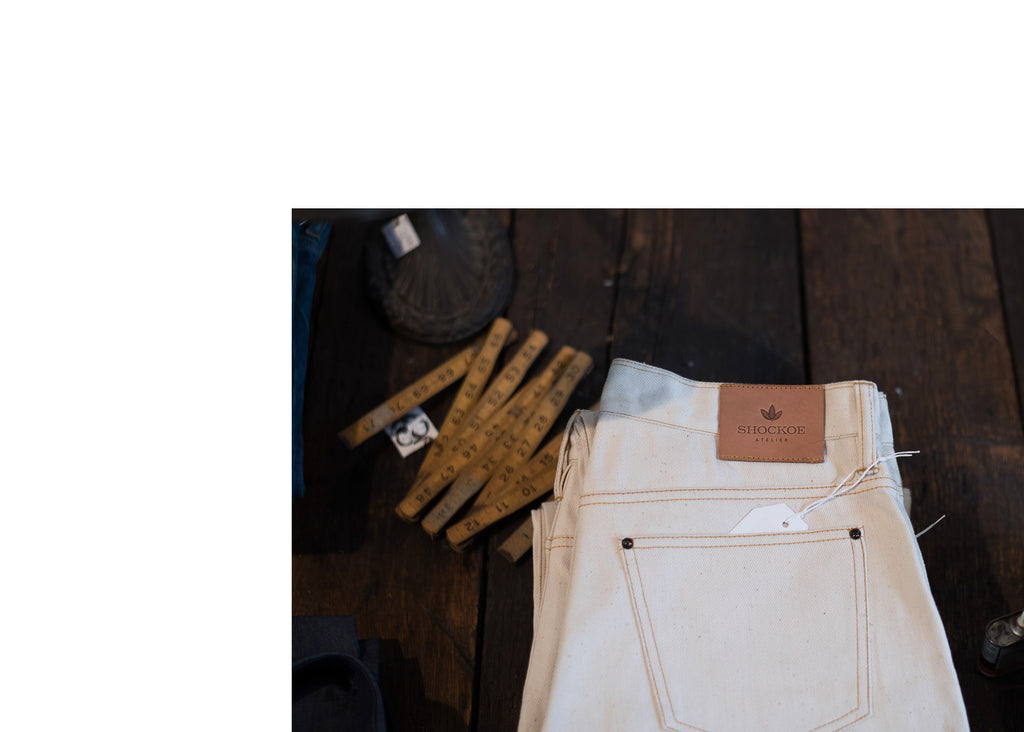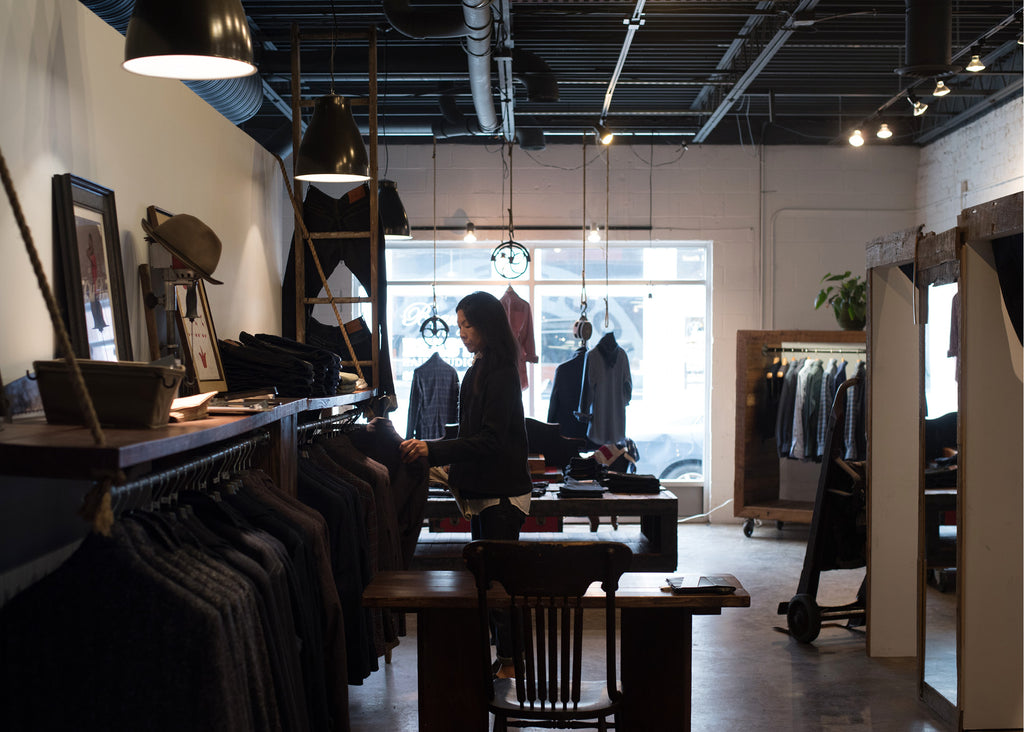We have a reverence for detail, a passion for natural processes and a fascination with talent close to home. Our new line of denim and mens shirting, Shockoe, welcomed us inside their atelier in Richmond, Virginia to see exactly how they design and produce their wares. The beauty of making is evident and the quality that results speaks for itself.
Interview with Matt Rho of Shockoe Atelier
Photography by Christina Hicks
B&C: How does Shockoe’s ability to change and alter patterns on-site distinguish your designs?
Matt Rho: Having our own production facility on-site means we're able to test and improve fits and designs in real-time. So the product you see now at Baby & Co. is the culmination of hundreds of adjustments and improvements we've made to the product over the years. It's a real advantage that most other brands don't have. I think what it means for us is that our fits are more road-tested than most other brands.
Another advantage of owning our own production is that we can be much more focused on the details of construction than other brands. We're able to be much more meticulous about the details. So rather than inspecting a finished product and making sure it's "on-spec," we're inspecting the construction process itself, the way every stitch is done, the machine it's done on, etc. We think this gives us a much more intimate knowledge of our jeans than other brands have, and allows us to make changes to the jean at the fabrication level that ultimately results in a more nuanced product.
B&C: Why do you source your denim from Japanese Mills?
MR: Every mill has its own unique approach and particular strengths. The two Japanese mills we work with, Kuroki and Collect, each bring something special to our denim selection. For example, Kuroki is terrific at pushing the envelope, producing really fun, unique fabrics that others just aren't doing. A good example of that is our Rainbow Neppy jeans, which feature a Kuroki fabric with multi-color confetti weft. Collect Mills are the masters of texture. Our Kojima jeans are made with Collect fabric, and the variation and texture in this fabric has to be seen to be believed. The other mill we work with is Candiani, based in Italy. Candiani produces a denim that's especially designed for comfort and a clean finish, which is terrific for a specific kind of customer.
B&C: What lasting standards of Italian design are carried forth into Shockoe's work?
MR: The things we bring to Shockoe from the Italian tradition are reverence for handwork, minimal construction, and the idea that a garment should have a certain nonchalance about it...this notion of Italian sprezzatura.
B&C: How did the company land in Richmond and particularly Shockoe Bottom for the site of the factory and store?
MR: Pierre and Anthony owned a men’s store in Washington DC at the time, and took a road trip south to scout out potential spots for a second location. They stopped in Richmond for lunch, made their way to the Shockoe Slip area, and immediately fell in love with its unique combination of old-world charm and urban grit. It felt real and authentic in a way that few neighborhoods do these days. We love this area because of that grittiness. Beautiful old tobacco warehouses that haven't yet been condo-ized by real estate developers, and a real diversity in terms of people. It's an area that takes you out of your comfort zone, and that's a source of inspiration for us.
B&C: What are some sources of the brand’s inspiration?
MR: We think of our brand as denim-inspired sartorial. So our philosophy is taken from denim, and applied to tailored goods. That philosophy is centered around the idea that a garment becomes truly yours as you put your own wear into it. And as it becomes more personalized to you with wear, it becomes more beautiful. This is based on the Japanese aesthetic of wabi-sabi (roughly summarized as "the beauty is in imperfection and impermanence"), which we apply to western (American and Italian) fabrications, where traditionally, notions of beauty have been about perfection rather than imperfection.


Video and images below courtesy of Shockoe














